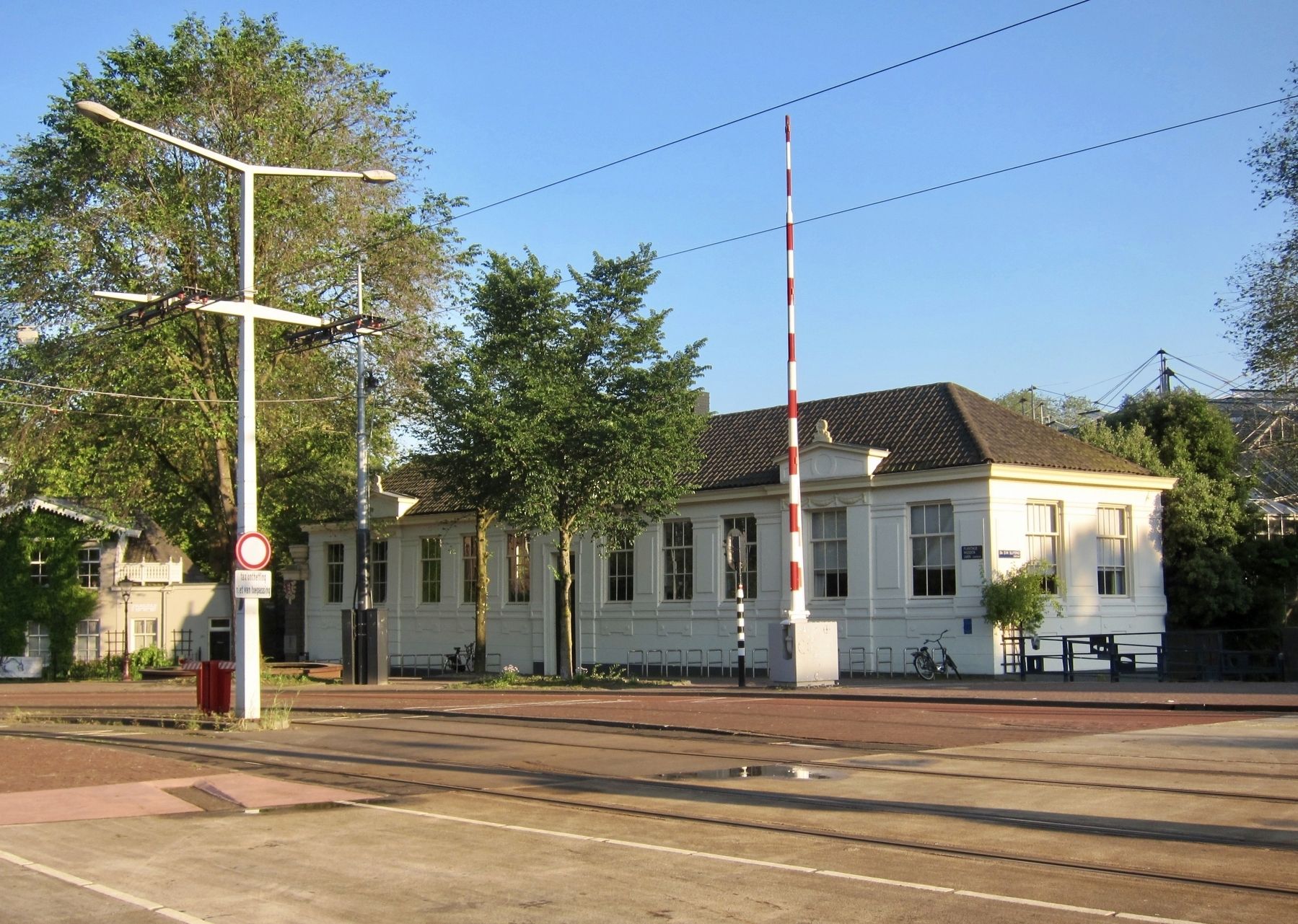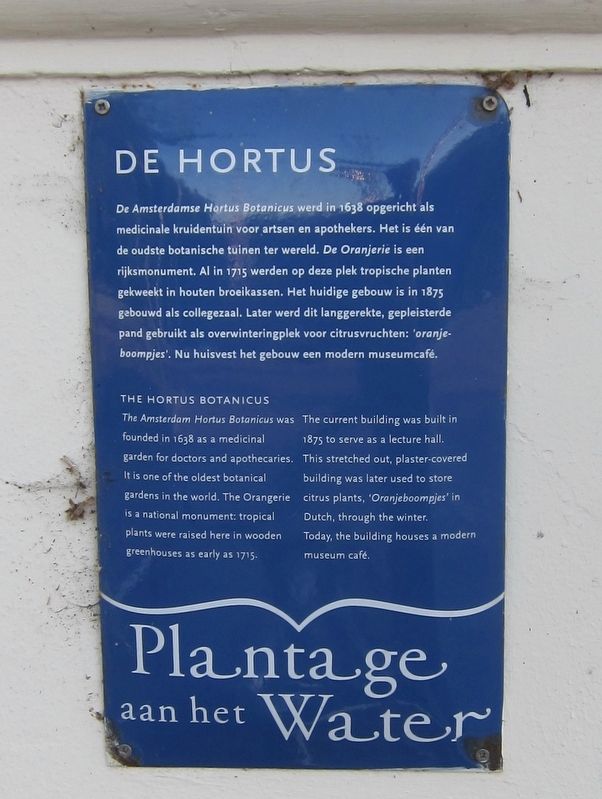Plantage in Amsterdam, North Holland, Netherlands — Northwestern Europe
De Hortus
Plantage aan het Water
The Hortus Botanicus
The Amsterdam Hortus Botanicus was founded in 1638 as a medicinal garden for doctors and apothecaries. It is one of the oldest botanical gardens in the world. The Orangerie is a national monument: tropical plants were raised here in wooden greenhouses as early as 1715. The current building was built as a lecture hall. This stretched-out plaster-covered building was later used to store citrus plants, 'Oranjeboompjes' in Dutch, through the winter. Today, the building houses a modern museum café.
Topics. This historical marker is listed in these topic lists: Agriculture • Horticulture & Forestry • Science & Medicine. A significant historical year for this entry is 1715.
Location. 52° 22.028′ N, 4° 54.431′ E. Marker is in Amsterdam, Noord-Holland (North Holland). It is in Plantage. Marker is at the intersection of Plantage Middenlaan and Doctor D.M. Sluyspad on Plantage Middenlaan. Touch for map. Marker is in this post office area: Amsterdam, Noord-Holland 1011 RR, Netherlands. Touch for directions.
Other nearby markers. At least 8 other markers are within walking distance of this marker. de wereld bleef doof / The World Remained Deaf (about 90 meters away, measured in a direct line); J.C. Amman School Memorial (about 120 meters away); Wertheimpark (about 120 meters away); Hugo de Vries (about 150 meters away); E.J. van Det School Memorial (about 150 meters away); Adriaan Morriën (about 150 meters away); Auschwitzmonument (Spiegelmonument) / Auschwitz Monument (Mirror Monument) (about 150 meters away); Portugees Israëlietisch Ziekenhuis / Portugese Israelite Hospital (approx. 0.2 kilometers away). Touch for a list and map of all markers in Amsterdam.
Also see . . .
1. Hortus Botanicus (Amsterdam). "Hortus Botanicus is a botanical garden in the Plantage district of Amsterdam, the Netherlands. One of the oldest in the world, it is one of Amsterdam's major tourist attractions." (Submitted on July 10, 2017.)
2. Heritage (de Hortus). "For the last 375 years, the Hortus has been a place for education and research. This means that we dealt – and still deal - with questions concerning the world of plants. Not as an isolated field, but within its own era and scientific,

Photographed By Andrew Ruppenstein, June 18, 2017
2. De Hortus Marker - Wide View, Looking South from Plantage Middenlaan
The marker is visible on the right corner of the building.
"Hortus Botanicus's initial collection was amassed during the 17th century through plants and seeds brought back by traders of the East India Company (VOC) for use as medicines and for their possibilities for commerce. A single coffee plant, Coffea arabica, in Hortus's collection served as the parent for the entire coffee culture in Central and South America....Likewise, two small potted oil palms brought back by the VOC from Mauritius, an island in the Indian Ocean, produced seeds after six years, and these were propagated throughout all of Southeast Asia, becoming a major source of revenue in the Dutch East Indies and now in Indonesia." - Wikipedia
"Hortus Botanicus's initial collection was amassed during the 17th century through plants and seeds brought back by traders of the East India Company (VOC) for use as medicines and for their possibilities for commerce. A single coffee plant, Coffea arabica, in Hortus's collection served as the parent for the entire coffee culture in Central and South America....Likewise, two small potted oil palms brought back by the VOC from Mauritius, an island in the Indian Ocean, produced seeds after six years, and these were propagated throughout all of Southeast Asia, becoming a major source of revenue in the Dutch East Indies and now in Indonesia." - Wikipedia
Credits. This page was last revised on February 3, 2023. It was originally submitted on July 10, 2017, by Andrew Ruppenstein of Lamorinda, California. This page has been viewed 197 times since then and 12 times this year. Photos: 1, 2. submitted on July 10, 2017, by Andrew Ruppenstein of Lamorinda, California.
